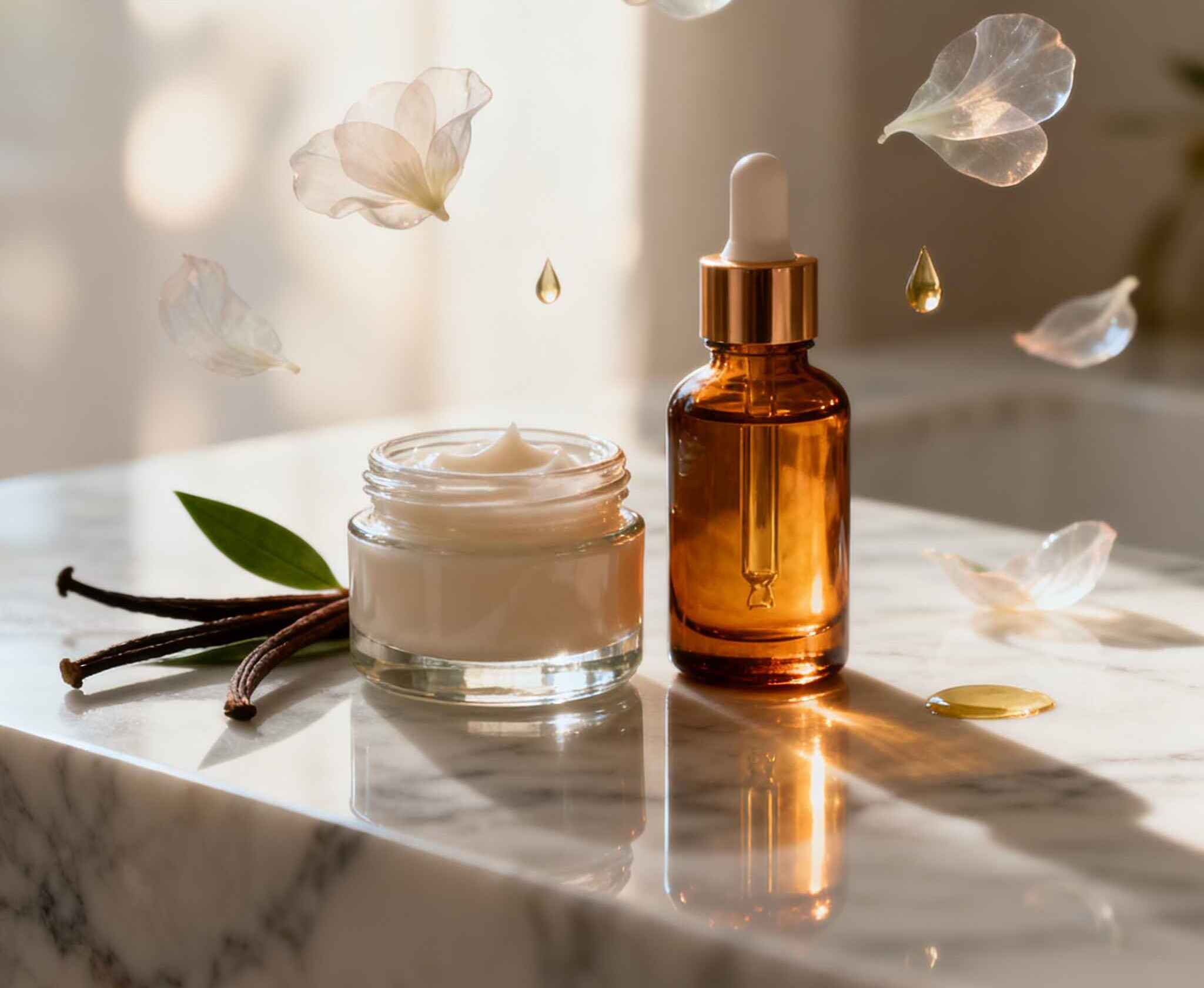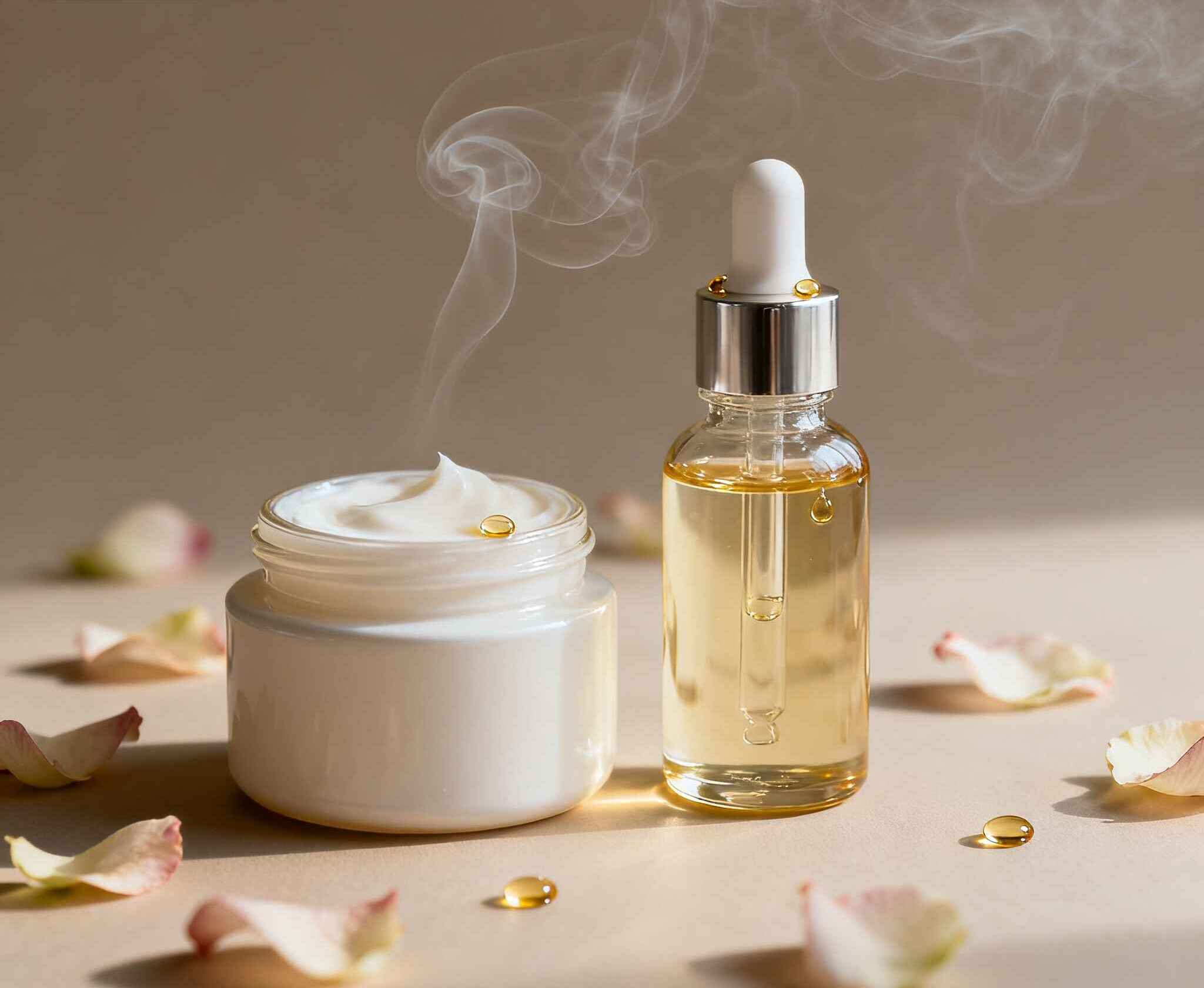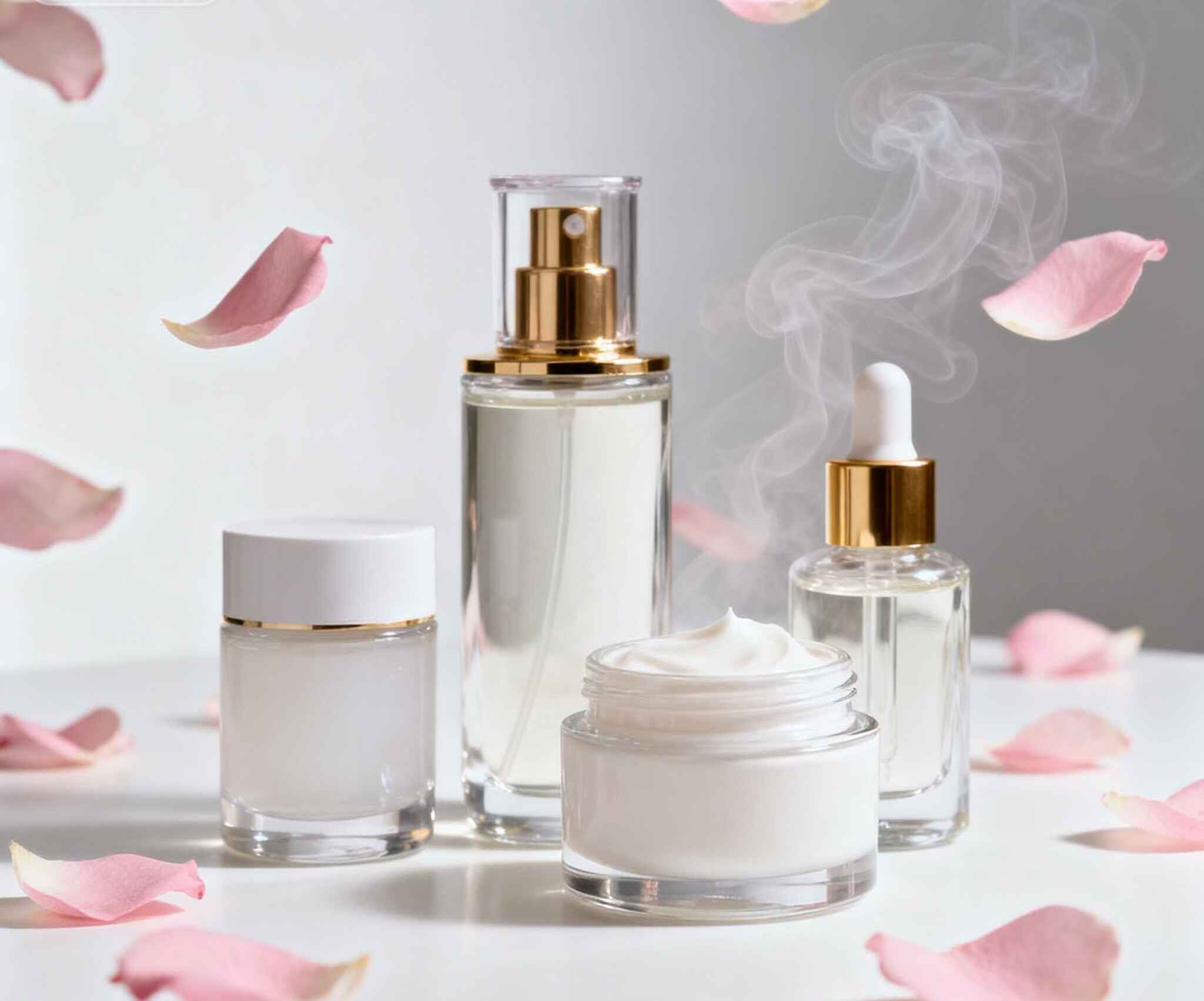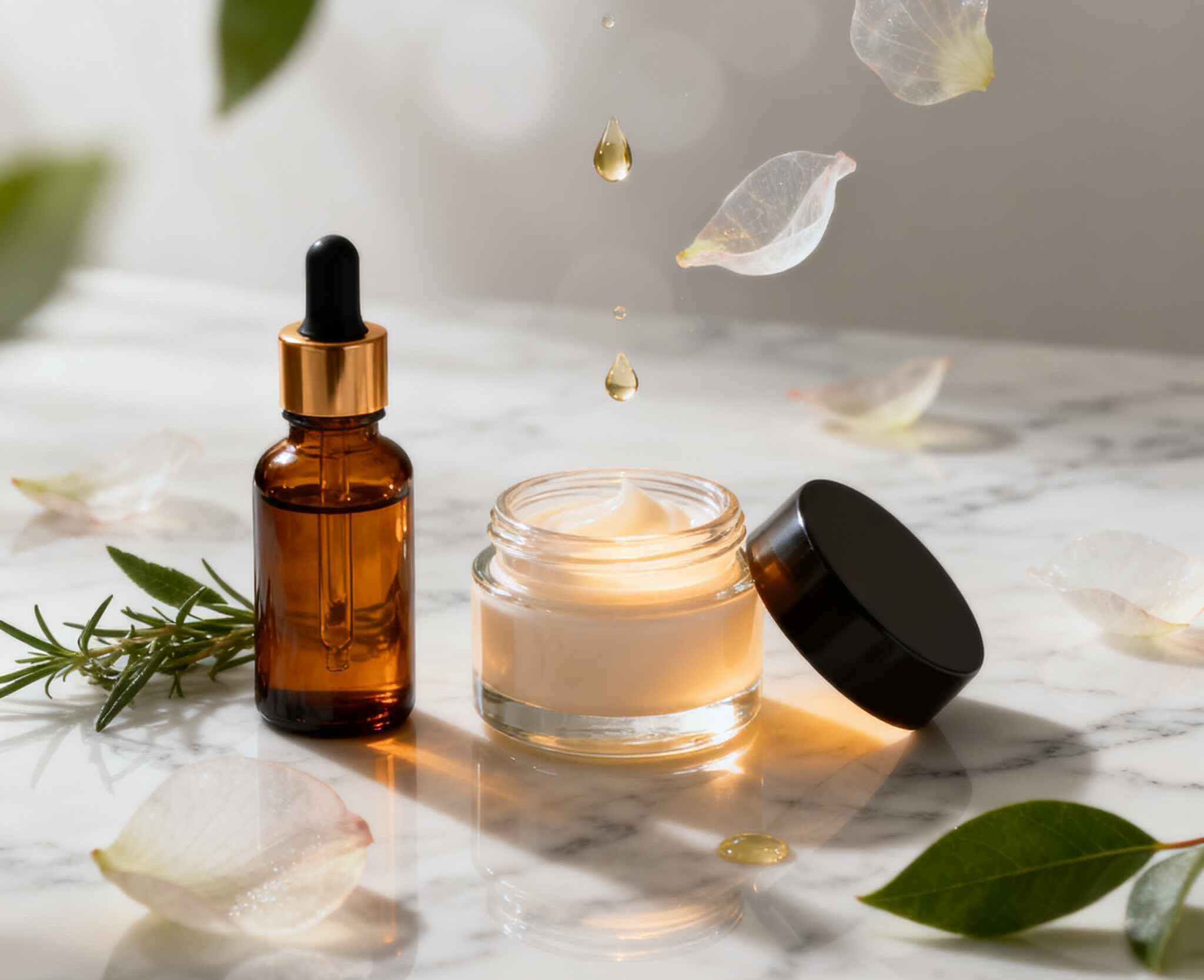



You want skincare that works and feels great. Scent plays a real role in that feeling. It shapes mood, signals quality, and nudges how a cream or serum is judged on skin. But you can’t bolt on a smell at the end and hope for the best. You need risk controls, clean labels, and a supplier who can deliver on time. That’s where I’Scent—an OEM/ODM Fragrance Oil & Perfume Raw Materials Manufacturer—fits the build: fine fragrance oils engineered for leave-on safety, labeled right, and ready to scale.
Fragrance isn’t just decoration. It shapes emotion and focus, which affects how users rate a product’s “quality.” People describe better comfort, calm, or freshness when the odor profile aligns with the formula’s skinfeel. This is why two similar bases can land completely differently in a test, just because the accord is tuned to the texture, spread, and dry-down.
Odor and texture interact. Raise or tune the scent and you can shift how testers perceive glide, cushion, or finish. Build the accord alongside rheology. Don’t wait until stability is done. Run home-use tests with JAR (Just-About-Right) and hedonic scales to check if the olfactory top and the emollient base actually “click.” If users say “it feels smoother,” but your viscosity didn’t change, you likely nailed the crossmodal effect.
Use both. Hedonic tells you like/dislike. JAR tells you whether intensity is too low, too high, or just right. In practice, JAR catches the “strong top note + thin base” mismatch early, before you print cartons.
Scent adds joy, but it also carries risk. Contact allergy to fragrance exists in the general population and climbs in atopic cohorts. Leave-on formulas require tighter control because exposure time is long. That means a smaller dose, smarter chemistry, and documented safety.
Oxidation matters. Linalool and limonene can form hydroperoxides in air, which show up in patch tests. If you want a citrus bloom or a bright herbal sparkle, consider stabilization, encapsulation, or a more stable cousin. Reduce headspace oxygen and keep drums sealed. Rotate inventory fast. These small moves lower the risk without killing the vibe.
Some users need fragrance-free, full stop. Don’t force the trade-off. Pair your scented SKU with a fragrance-free twin that keeps the same base, actives, and claims. That one decision cuts returns, avoids angry DMs, and respects dermatology guidance for reactive skin. It’s not a compromise; it’s a clean path for more users.

Safety should be boring and predictable. IFRA Standards and QRA/QRA2 give you a map: category limits, restrictions, and a method to set dose by product type.
Face cream ≠ body wash. Leave-on categories sit tighter because skin contact is long. Set the dose per IFRA category and keep it in spec. When a marketing brief pushes for a louder top note on face, your lab should push back with the category table in hand and an alternative accord that reads strong without breaking limits.
Paperwork protects launches. Lock the BOM with exact dose, file IFRA Certificates and COA, and keep the PIF updated for your label markets. It’s admin, yes, but it’s also how you avoid rework and last-minute artwork panic.
If you sell in the EU/EEA, Regulation (EU) 2023/1545 expands the allergen list and sets disclosure thresholds for leave-on and rinse-off. The action plan is practical: audit fragrance concentrates, calculate triggers against thresholds, and update INCI panels and e-commerce copy. Gate it in artwork and in your PLM/ERP so nothing slips thru.
Use a label trigger sheet per SKU. When formulation tweaks change the fragrance percentage, re-run the trigger sheet automatically. Tie it to your lot specs so every batch ships with the same claims, the same label, and the same comfort for QA.
You want “low dose, high perception.” Microencapsulation helps. Cyclodextrins, polymer microcapsules, and silica shells can protect volatile notes, meter release, and soften exposure spikes on skin. Encapsulation won’t fix a bad brief, but it boosts longevity and keeps bright top notes from flashing off. Choose materials that play nice with your emulsion and your sustainability guardrails.

| Claim | Data Point (range or typical finding) | Practical Move for Skincare |
|---|---|---|
| Scent shifts mood and perceived quality | Human studies show measurable effects on mood/attention when fragrance intensity is tuned | Build accords to support “calm,” “fresh,” or “comfort” experiences without medical claims |
| Odor × texture synergy | Odor level interacts with viscosity and spread to lift liking and “quality” ratings | Co-develop odor with rheology; use JAR plus hedonic scores, not one metric |
| Contact allergy exists | General population shows measurable sensitization; higher in atopic cohorts | Offer fragrance-free twins; control dose; choose stable notes; label right |
| Oxidized terpenes show positives | Patch tests often flag linalool/limonene hydroperoxides | Stabilize, encapsulate, or substitute; manage oxygen and storage |
| IFRA = safe-use rails | Category limits constrain dose by product type | Keep leave-on within category caps; file IFRA certs; set spec limits |
| Encapsulation smooths release | Controlled release reduces exposure spikes and improves longevity | Use cyclodextrin/microcapsules; verify feel and bloom on skin |
(No cost numbers here, by design.)
Each project starts with an olfactive brief and ends with a stable, compliant fragrance oil matched to your base. Because we run factory-direct with ERP traceability, you’ll see consistent lots and predictable timelines. Need speed? We move fast.
I’Scent runs a large library with tens of thousands of formulas and a senior perfumery bench. We can replicate a target with high accuracy or build a bespoke profile from scratch. The result: fewer revision loops, faster sample rounds, and a cleaner path to market.
We keep OTIF discipline. Samples land fast; mass follows quickly; MOQ stays startup-friendly while still letting you scale. ERP lot-trace covers every drum. Batch-to-batch consistency is tight, so sensory doesn’t drift after you launch.
We deliver IFRA certs, allergen maps against EU triggers, and spec sheets that your RA team can paste into the PIF. That saves your artwork timeline and keeps your e-commerce copy honest.

You bring the positioning. We bring creative direction, safety rails, and reliable supply. Need a bespoke profile? We’ll craft it. Need a high-accuracy match? We’ll duplicate. Need speed? We move. Need traceability? ERP covers you. Global paperwork? We’ve got the certifications and files your auditors want to see.